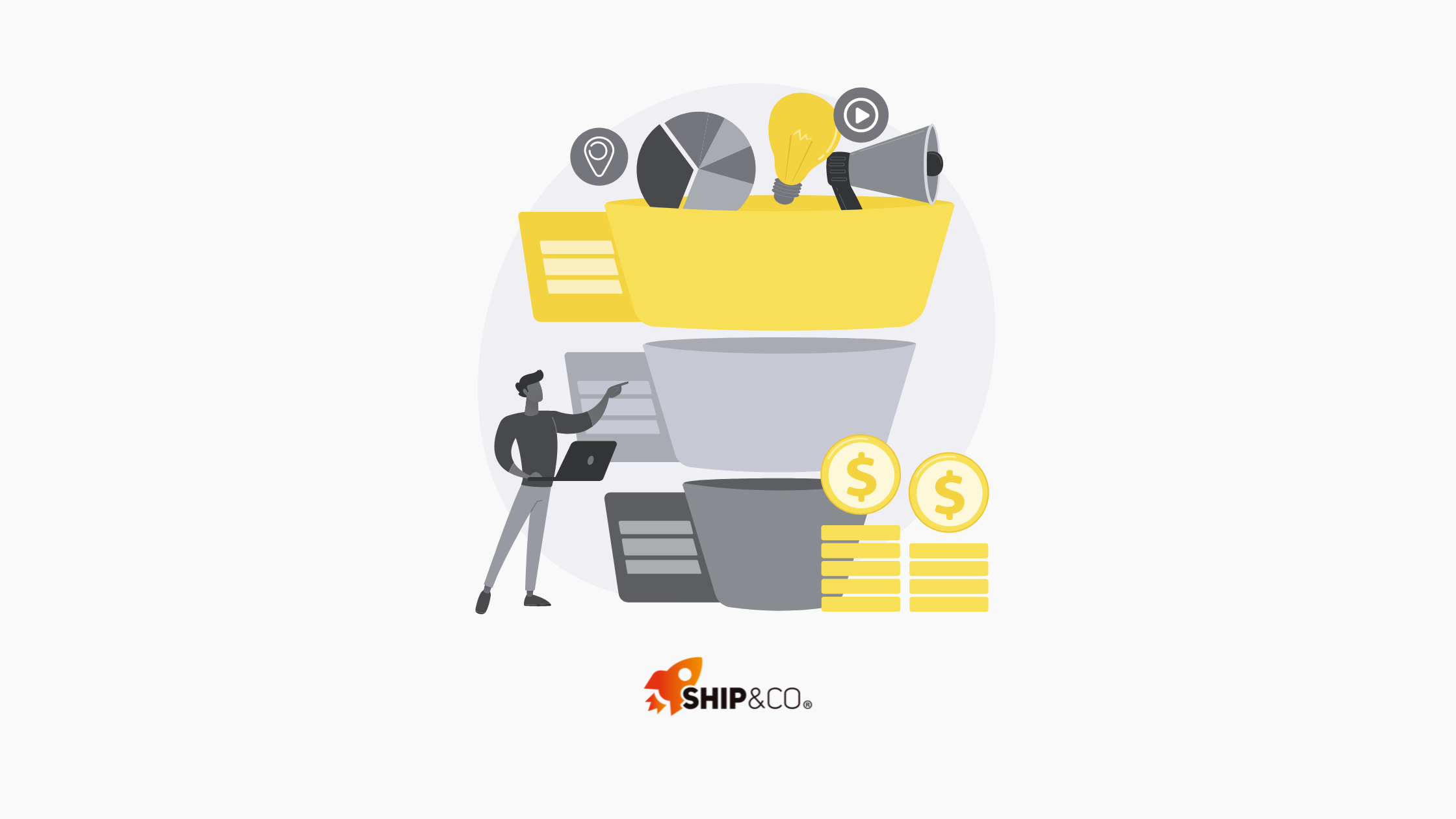Article by Lizzie Davey
Cross-border selling means you’re no longer limited to people in close proximity. Instead, you have the whole world at your fingertips–literally. Opening your store to shoppers from different countries can explode your reach, increase sales, and dramatically grow brand awareness.
And since the pandemic, when brick-and-mortar shops were forced to shut and shoppers flocked to their smart devices to buy essentials, cross-border selling has never been bigger. In fact, one study suggests that 66% of eCommerce brands are already selling cross-border, and 87% of them believe that expanding their business into new global markets has been a key driver in growing sales.
Are you ready to take your store overseas?
You might be wondering when is a good time to start tentatively pushing into new markets.
The answer is: it depends.
Ideally, you’ll have rock-solid sales in your home market or, at the very least, a loyal following, regular sales, and a well-known brand identity. Alternatively, if you feel like you’ve tapped out of your local market, it might be time to take things overseas.
But it’s not quite as simple as promoting your products to a different market. You have to consider:
- What different markets want and need (and whether you fit that need)
- How you’ll get your products to international customers
- Whether you have the resources available to grow into new markets
The initial stages of cross-border selling can put a huge strain on your resources, especially if you’re trying to break into multiple markets at once. Does your team structure allow for the additional work? Do you have the available funds to invest in additional marketing and content?
Reaching a bigger audience is the Holy Grail for many merchants, but getting there requires a well-thought-out strategy.
Here are some tips for cross-border selling with your Shopify store.
1. Find the right market
The world is a huge place, and it’s difficult to know where to start with cross-border selling. It can be tempting to throw your digital doors open for anyone and everyone and figure it out from there, but it’s often more lucrative to be strategic with your targeting.
These tools can help you identify potentially profitable markets:
- Google Trends: search for your product names and filter by location to see if there are any noticeable upticks in searches in different places (look for places where there has been a steady incline in searches, as these will likely have more stamina)
- Google Search Console: access a performance report for your site and segment the results by country to see where the majority of people who visit your site come from
- Google Analytics: similarly, check your Audience reports and dig down into geographic location to see which destinations are already a hit
Choosing markets that have already shown an interest in your brand and products–whether it’s via Google searches or visiting your actual site–means you’re using cold, hard data to make a decision rather than just throwing spaghetti at the wall and seeing what sticks.
2. Customize your store for each market
Markets may well have the same currency and language, but the culture might be completely different. What’s appropriate and popular in one place might not be in another, which is why it’s important to customize your store based on local interest.
For example, check that a trending product is definitely trending in another country, or if you’re using pop culture references to advertise your products that they’re relevant in different locations.
Boohoo has different homepages for different locations. Above is the UK version and below is the Canadian version.
3. Speak the local language
Research has shown that 42% of Europeans never buy products in a language other than their own. For some places this percentage is even higher–take Japan, for example, where more than 70% of shoppers will only browse online stores in their native tongue.
It’s crucial that, when a shopper lands on your site, they’re greeted by a language they understand so they don’t feel out of place. This enhances the customer experience and builds trust at the same time.
Of course, it would be a total nightmare to re-write every single page in a different language, which is why you can translate your Shopify store using a language app or integration. Shopify offers more than 20 different language translations which go beyond the storefront and are also implemented at checkout and in email notifications to keep the customer experience slick and consistent.
You can add an extra layer to this with the Geolocation app, which recommends the best country and language for a shopper based on their IP address and browser preferences.
Patagonia asks shoppers to choose their location and language so it can provide a personalized experience.
4. Provide local currency options
Just like shoppers don’t like browsing in a language other than their own, they don’t like paying in currencies that they’re not used to either. In fact, 92.2% of shoppers prefer to shop and purchase in their local currency–and why wouldn’t they?
Luckily, Shopify Markets can automatically convert prices to the shopper’s local currency, featuring more than 130 international currencies from around the world. It’s worth noting that Shopify will automatically convert currencies based on the exchange rate at that exact moment, which is why it’s a good idea to apply customized rounding rules.
As well as converting to local currencies, carry out pricing research in each of the new markets you want to target to check your prices are on par with similar products and competitors. The last thing you want to do is price yourself out (or underprice yourself) because you haven’t done your research.
At this point, consider local taxes and shipping too, since these elements might cut into your profit margin when selling internationally. What might be a good price in one place might not be in another simply because the taxes are much higher.
5. Target relevant keywords
Keywords bring new customers to your site and help shoppers discover your products. But the keywords someone uses in the UK might not be the same keywords someone uses in Australia (we only have to look at the flip flop vs thong debate to see this in action).
Optimize your online store for local searches by incorporating the right keywords–use a keyword tool and filter the results by location to determine whether the words used to describe a product in one location are the same as in another.
In addition to this, use an international domain to ensure customers feel safe when shopping. As well as creating a more personalized, local experience, this has the potential to improve your store’s SEO since Shopify automatically sets the right SEO tags.
Nordstrom’s Canada site has a .ca domain for a local feel.

Having a localized domain also means you can direct your paid ads to the right landing page. If you’re targeting people in Canada, sending them to a Canadian domain will feel far more comfortable for them and add consistency to the journey.
6. Understand compliance laws in each location
Each part of the world has its own set of rules and regulations regarding international selling. It can be confusing trying to learn the ropes in each new place, but it’s critical to the success (and legalities) of your business.
Take invoicing, for example. It’s a crucial part of online shopping, but different countries have different rules and regulations for how it should be done. It’s important that you understand what legal documentation is required in the new markets you’re serving so that you remain compliant.
It’s the same with duties and taxes. Sometimes you’ll need to tack on extra fees in different places, which is why it’s important to be upfront about any additional costs that shoppers might have to pay. If you’re shipping a product halfway across the world, there’s a good chance it has to go through multiple countries in transit, so you’ll need to understand what happens at each of those stages and if there are any duties or taxes due for each checkpoint.
Shopify Markets simplifies this process by collecting import taxes at checkout so that you can provide customers with total clarity from start to finish.
7. Communicate about shipping
One of the biggest challenges of selling overseas is shipping products across multiple borders. It’s far easier to courier a product via road in the same country than it is to organize flights or boats.
From the customer side, it’s common to expect additional fees if a product is being shipped from abroad. So, as the seller, it’s crucial to keep customers informed at every step–how much will it cost? How long will it take?
Alleviating these worries upfront will encourage more customers to buy from you and will lead to long-term loyalty. As well as being clear about shipping costs, keep customers updated on the progress of their delivery while it’s in transit. Send an email when a product has been shipped, when it has arrived with the local courier, and when it’s out for delivery.
Having a clear shipping strategy in place means partnering with the right shipping companies. If your brand really takes off in one specific market, you might want to consider a local fulfillment option or multi-origin shipping for that location.
Shipping is such a huge part of the online shopping process, and it can end up being hugely frustrating for customers. The key to cross-border success is creating a solid shipping strategy for each local market. This often means using multiple couriers depending on the location and providing shoppers with a choice between who they get their products delivered by and how they get delivered.
Set your Shopify store up for cross-border success
International selling can reap incredible rewards for your brand, like new customers, an increase in brand awareness, and a surge in online sales. But it’s important to get it right. Setting your store up to target local markets with the right currencies, language, and content is crucial if you want customers to feel comfortable, but it’s also important to plan your shipping strategy in advance to avoid slapping shoppers with huge fees at checkout.
About Ship&co
Ship&co is a global shipping platform designed by and for e-commerce sellers. Created by the team behind Bento&co, who have been selling on Shopify since 2008, Ship&co provides a simple and easy-to-use web dashboard and shipping API. Ship&co helps online sellers ship packages faster by automatically syncing orders and creating shipping labels and invoices in minutes. With Ship&co, you can create shipping labels for FedEx, UPS, DHL, NinjaVan, Yamato, Sagawa, and more, with just two clicks to complete the process and mark your orders as shipped. For more information on Ship&co, visit shipandco.com or reach out to us via [email protected] !


